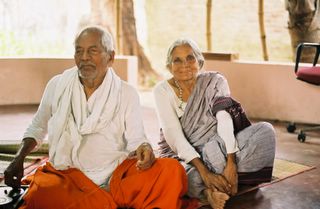Landscapes (Aliyah)
As we traveled up towards the northwest, the land became soggier, and the scripts of railroad signs changed from Tamil to Telugu to Kannada to Hindi to Gujarati. Karnataka was full of mud and water buffaloes. I tried to keep a count of the buffaloes, but had to stop after I got over to fifty in ten minutes.
The thing that struck me most as I crossed the Indian peninsula was how human it all is. Nearly all the land was under some form of cultivation, and that which was not was mostly covered with the invasive imported thorn-bushes. I know that if I were taking the same route a century or even several centuries ago, the landscape would not be very different. The Indian land has grown with its cultivators, and has stayed remarkably productive, after thousands of years of farming, while farmlands all across the U.S. give out after less than a century.
The land we cross is extraordinarily flat, with only a few small hills along the horizon. I am not used to this. I come from the Pacific Northwest, from a town where, in some places, I can see two high ranges, mountains surrounding me on three sides. Mount Rainier, the third highest mountain in North America, is barely two hours drive from my home. I’m not very fond of flatness. When I first went to visit Western Massachusetts, where I now go to college, we drove through the Berkshire Mountains to Williams College, David’s old school. I couldn’t believe that these were the “mountains” mentioned in all of David’s favorite college songs, insisting that mountains had to have glaciers! There are no volcanoes on the East Coast of the U.S., or in India for that matter (except for the Himalayas). What’s the fun of that?


0 Comments:
Post a Comment
<< Home